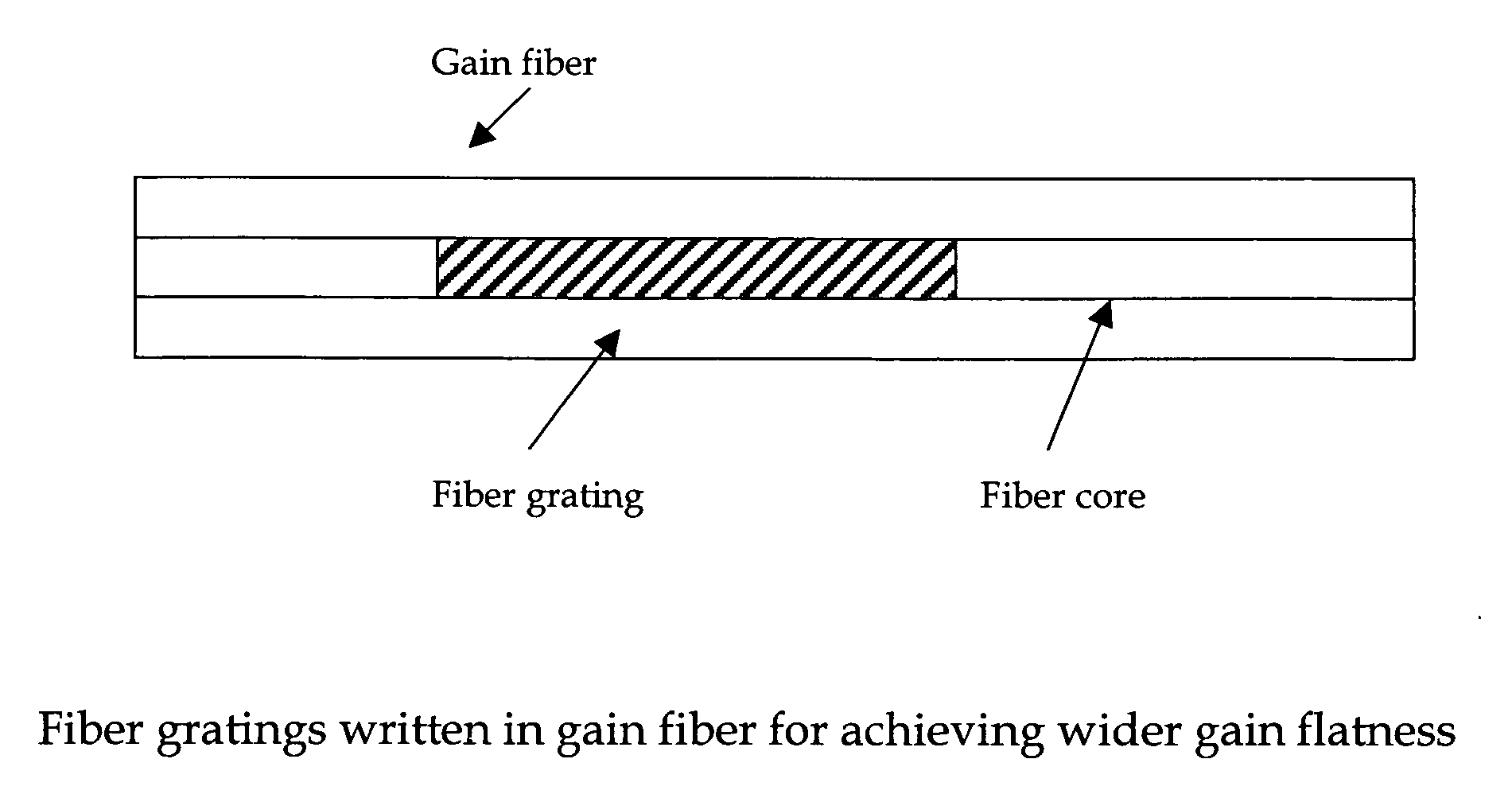Achieving ultra-short pulse in mode locked fiber lasers by flattening gain shape
a fiber laser and gain shape technology, applied in the direction of wave amplification devices, electrical equipment, laser details, etc., can solve the problems of difficult to achieve the practical application of ultra-short pulse mode-locked fiber lasers, the distortion of pulse shapes, and the inability to achieve ultra-short pulse mode-locked lasers. the effect of ultra-short high power lasers
- Summary
- Abstract
- Description
- Claims
- Application Information
AI Technical Summary
Benefits of technology
Problems solved by technology
Method used
Image
Examples
Embodiment Construction
[0021] Referring to FIG. 2 for a schematic diagram of a nonlinear polarization pulse-shaping mode locked fiber laser 100 of this invention. The fiber system is an ultra compact and low cost all-fiber based high power femtosecond fiber laser system of this invention. This is a laser system formed with all fiber-based components. The fiber laser has a ring configuration receiving a laser input through a 980 or 1060 nm WDM 110. In an exemplary embodiment, a 980 nm high power pump laser diode 101 was used to pump the gain fibers 105 for amplifying the pulses circulating in the cavity. The all fiber-based laser 100 included a gain medium 105 to amplify and compress the pulse width of a laser projection in the laser cavity. The gain medium 110 can be an Yb doped fiber (YDF), an erbium doped fiber (EDF) or a Tm doped fiber (TDF) for wavelength of 1 μm, 1.55 μm or 2 μm respectively. The gain medium 110 has high doping concentration. For an exemplary gain medium 105 of YDF, the gain medium f...
PUM
 Login to View More
Login to View More Abstract
Description
Claims
Application Information
 Login to View More
Login to View More - R&D
- Intellectual Property
- Life Sciences
- Materials
- Tech Scout
- Unparalleled Data Quality
- Higher Quality Content
- 60% Fewer Hallucinations
Browse by: Latest US Patents, China's latest patents, Technical Efficacy Thesaurus, Application Domain, Technology Topic, Popular Technical Reports.
© 2025 PatSnap. All rights reserved.Legal|Privacy policy|Modern Slavery Act Transparency Statement|Sitemap|About US| Contact US: help@patsnap.com



